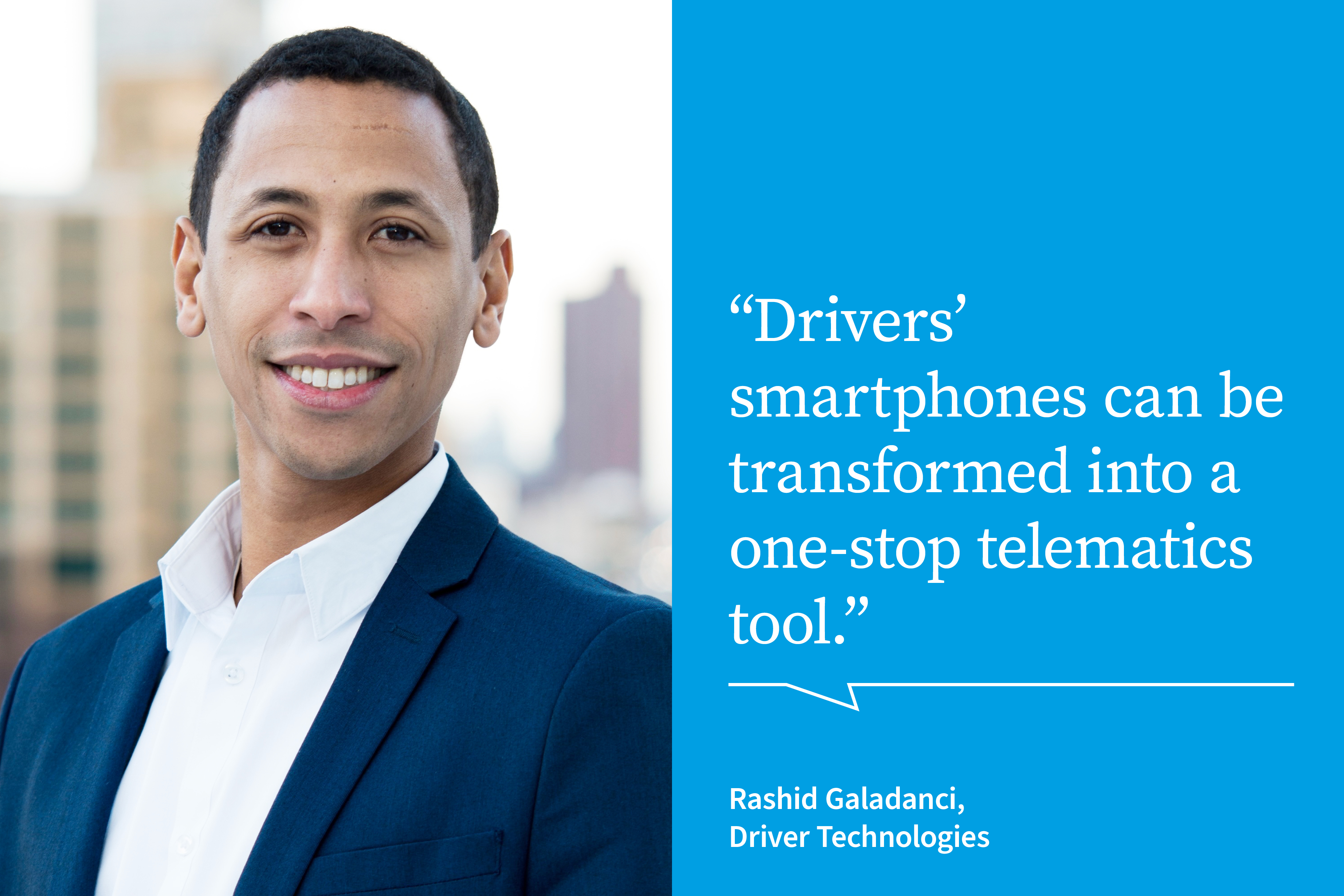How a smartphone can become an AI-driven telematics tool to encourage safe driving
Telematics systems optimise navigation, performance and safety for drivers. Rashid Galadanci, CEO and co-founder of Driver Technologies, explains how artificial intelligence and cloud software are taking vehicle telematics to the next level.
In recent years, our world has seen the rapid growth of ride-hailing companies and a boom in trucking logistics as on-demand services − from hailing a private car to same-day delivery − have become synonymous with modern daily life. The corresponding surge in ride-hailing cars and trucks, not to mention private vehicles, means that tools that monitor roads and driver behaviour are growing more sophisticated and more valuable.
Traditional vehicle telematics has been used to solve pain points for individual drivers and truck fleet operators, transmitting location and vehicle usage data to optimise route planning and vehicle maintenance, for example. Some systems utilise dashboard cameras, or dash cams, to continuously record road events. For drivers and fleet operators, telematics offers navigation, safety and performance functions, such as GPS, roadside assistance and vehicle diagnostics.
For the insurance sector, vehicle telematics is used to acquire important driver data, such as driving behaviour and mileage. Insurers have incorporated telematics data into their underwriting process. This allows them to determine driver risk profiles and price premiums more precisely, analyse risk, and assess claims more accurately and efficiently, thereby improving claims loss ratios.
Now, artificial intelligence (AI), cloud and video software are pushing vehicle telematics to the next level, with advantages for all parties. “The insurance industry has been at the forefront of adopting AI and video-informed telematics to carve out a better and deeper understanding of how insureds drive,” says Rashid Galadanci, CEO and co-founder of Driver Technologies, a mobility tech company that has developed a driver safety app which has been downloaded in over 180 countries.
Turning a smartphone into a telematics tool for safe driving

“In this new era of vehicle telematics, drivers’ smartphones can be transformed into a one-stop telematics tool − without the need for external hardware,” Galadanci says. The AI-driven, video- and cloud-based Driver App does just that. It serves as an all-in-one dashcam, maintenance and safety device to track, analyse and offer solutions that encourage safer driving. The app turns a users’ smartphone into a safe-driving tool by integrating a proprietary algorithm “that makes use of all the available sensor data to understand whether the driver is in danger or potentially in a near-accident scenario,” he adds. “This is done in real-time and after the event to study various driving behaviours.” For instance, the app lets users video record their trip, while feeding back safety alerts to the driver, such as forward collision, driver drowsiness and distraction warnings. The recorded videos can be analysed in minute detail − providing speed, accelerometer, location and video data to better understand a specific event and improve driving behaviours.
The app also leverages gamification to encourage safe driving habits: “We think of the app as similar to an activity tracking device for driving,” Galadanci says. After ten hours of driving, users obtain a ‘Driver Score’ that is based on traditional telematics factors, such as speed and hard braking, alongside contextual telematics via external video. This could include speeding – with the AI reading the posted speed limits – failing to observe stop signs and tailgating, to mention only the highest indicators of driving risk on the road.
Some insurers are taking proactive steps to enhance road safety by offering telematics-based apps with driver coaching programmes that incentivise focused driving, for example preventing people from using their phones while driving. “But these telematics-based apps currently lack any contextual analytics like video proof of whether the driver is distracted or drowsy. The best digital solution to overcome cell phone-related distractions is to include technology like a dash cam in vehicles to help identify objects in the road and provide audible alerts and warnings,” Galadanci says.
At the same time, “our team is constantly tweaking those algorithms and retraining and improving our AI models to have an increasingly complex understanding of what it means to be in a real-world driving scenario,” he says. In the coming months, the company will leverage AI to upgrade mapping features and driver notifications on road conditions and accidents, and to include a voice-based driving assistant to deliver coaching tips and safety insights in real-time.
Insurer benefits
Over the last year, Driver Technologies has seen what Galadanci calls “incredible growth” with insurance clients.
“Telematics with AI video analysis is incredibly valuable for insurers, helping them underwrite and classify risk based on how an individual, or whole fleet, drives, instead of relying solely on factors like tailgating and traffic sign adherence.”
The combination is similarly beneficial in the claims process: “It provides visual ground truth to cut substantial time and costs from the claims lifecycle,” he explains, “and in many cases can eliminate any need for arbitration.”
The real-time video recorded from the Driver Technologies app is securely stored in the Driver Cloud. Users maintain “complete control of their stored data and can choose to share their driving videos, AI analysis, safety warnings and location… whether with family, insurers, or employers,” Galadanci says.
“The ability to share video with an insurance provider or employer via a cloud link versus traditional hardware helps to shorten the claims process and get drivers back on the road sooner."
Up ahead, the company is looking to work with insurers to leverage their app as a third-party tool − akin to a credit score − “to showcase how good a driver someone is, instead of basing costs on traditional factors like demographics,” Galadanci notes. Some insurers have started offering their customers usage-based insurance (UBI) that reflect a user’s driving behaviour − with good habits translating into lower premiums.
Galadanci expects that the app will be further integrated into “more insurance-backed programmes for commercial and personal drivers… giving them a data-management and privacy-controlled way to drive safer.”
Driver Technologies is a company that provides automotive software and cloud technology for connected vehicles. Driver App, its AI- and cloud-based dash cam app, uses mobile phones – without additional hardware – to video record drivers’ trips and optimise safe driving for individual and fleet drivers.
User questions
Answered questions
Unanswered questions
Views: 892
Downloads: 0
| 0 % | |
| 0 % | |
| 0 % | |
| 0 % | |
| 0 % |
Page is favored by 0 user.
Contact inquiries: 0


